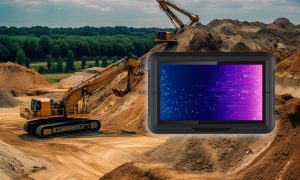There are all operating systems, why do some manufacturers only offer Windows systems, while some offer Linux systems, now let CFDEVICE tell you, what they are different.
- Operating System:
Windows 10: Windows 10 is a proprietary operating system developed by Microsoft. It is widely used in various computing devices, including vehicle-mounted computers. Windows 10 offers a familiar user interface with features such as a graphical user interface (GUI), multitasking capabilities, and compatibility with a vast range of software applications.

Linux: Linux is an open-source operating system kernel that is often used with various distributions (distros) such as Ubuntu, Debian, CentOS, and Fedora. Linux offers flexibility, customization options, and robust security features. It is highly customizable and tailored to specific needs, making it popular for embedded systems and specialized applications. means Linux is more flexible in designing the function you need.

- Software Compatibility:
Windows 10: Windows 10 has a vast ecosystem of software applications, including proprietary software and commercial applications. It offers broad compatibility with various hardware devices and peripherals, making it suitable for users who rely on specific software solutions.
Linux: While Linux provides access to a large repository of open-source software, including productivity tools, development environments, and server applications, it may have limited compatibility with proprietary software designed for Windows. However, many alternative open-source solutions exist for common tasks, so you can get more options.
- Security:
Windows 10: Windows 10 incorporates various security features, including antivirus software, firewall protection, and regular security updates from Microsoft. However, malware and viruses often target Windows due to its widespread usage, requiring users to take precautions to mitigate security risks.
Linux: Linux is known for its robust security architecture and relatively low susceptibility to malware and viruses compared to Windows. Its open-source nature allows for rapid identification and patching of security vulnerabilities by the community. Additionally, Linux distributions typically provide granular control over system permissions and access rights. do not worry the Bug will affect your work or data loss.
- Resource Usage:
Windows 10: Windows 10 tends to have higher system resource requirements compared to Linux, including CPU, memory, and storage space. While modern hardware can efficiently run Windows 10, resource-intensive applications or background processes may impact performance.
Linux: Linux is known for its efficiency and ability to run on a wide range of hardware configurations, including older or low-powered devices. Linux distributions can be optimized for minimal resource usage, making them suitable for embedded systems or devices with limited hardware capabilities.
- Cost:
Windows 10: Windows 10 is a commercial operating system, and licensing fees may apply depending on the version and usage scenario. This cost may be a consideration for organizations deploying vehicle-mounted computers running Windows 10.
Linux: Linux is open-source and typically free to use, reducing licensing costs for organizations. However, there may be associated costs with customizations, support, and training, depending on the specific Linux distribution and deployment requirements.
Ultimately, the choice between a vehicle-mounted computer running Windows 10 or Linux depends on factors, such as software compatibility, security considerations, resource requirements, and budget constraints. Before buying, you should carefully evaluate your needs and priorities to select the operating system that best aligns with your requirements.














